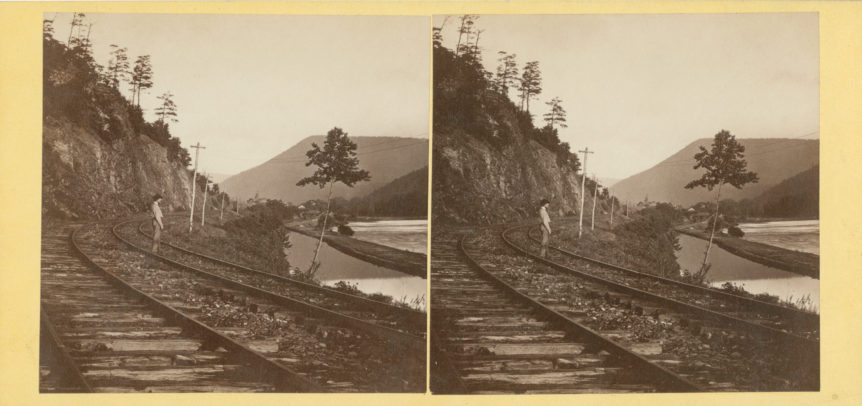
Rising Mist after Rain, Juniata River, stereoscopic albumen prints by John Moran, c. 1862. Library Company of Philadelphia.
A body of work that has received scant attention from collectors is on view this spring at the National Gallery of Art. East of the Mississippi: Nineteenth-Century American Landscape Photography contains photographs of all types—daguerreotypes, tintypes, ambrotypes, cyanotypes, heliotypes, and more—along with several paintings. Taken together, they provide an in-depth look at the state of the East in the 1800s.
Though painters of “the sublime” drew inspiration from Niagara Falls and the vistas of the Hudson River Valley in the first half of the nineteenth century, it was the features of the West that inflamed the imagination in the second. A land of skyscraping trees and endless mountain chains and canyons, the West—as captured on the plates of adventurer-photographers such as A. W. Ericson, Timothy O’Sullivan, and Carleton E. Watkins—seemed al- most extraterrestrial.
But the East was hardly ho-hum, as this show makes clear. The Industrial Revolution was in full swing, and what was being smelted in Pittsburgh, slaughtered in Chicago, and excavated in the mines of the Appalachian Basin were fueling a grand transformation in the eastern United States. Photographers there documented the grand bridges and dams, the barges navigating the new canals, the public parks being built in the great cities, the multiplying factories, and those suddenly omnipresent railroads that seem to creep into every frame.
Another feature of this photo trove is of purely genealogical interest: looking through it, there’s always the chance you’ll catch a glimpse of your great-grandparents.
East of the Mississippi: Nineteenth-Century American Landscape Photography • National Gallery of Art, West Building, Washington, D. C. • to July 16 • nga.gov • New Orleans Museum of Art, New Orleans • October 5 to January 7, 2018 • noma.org

